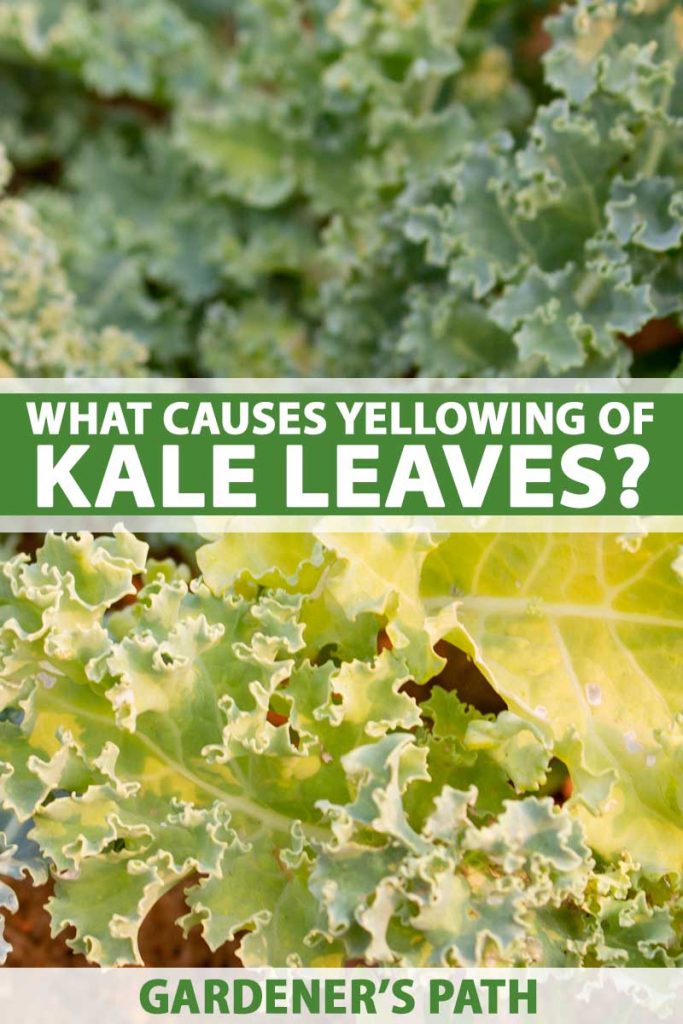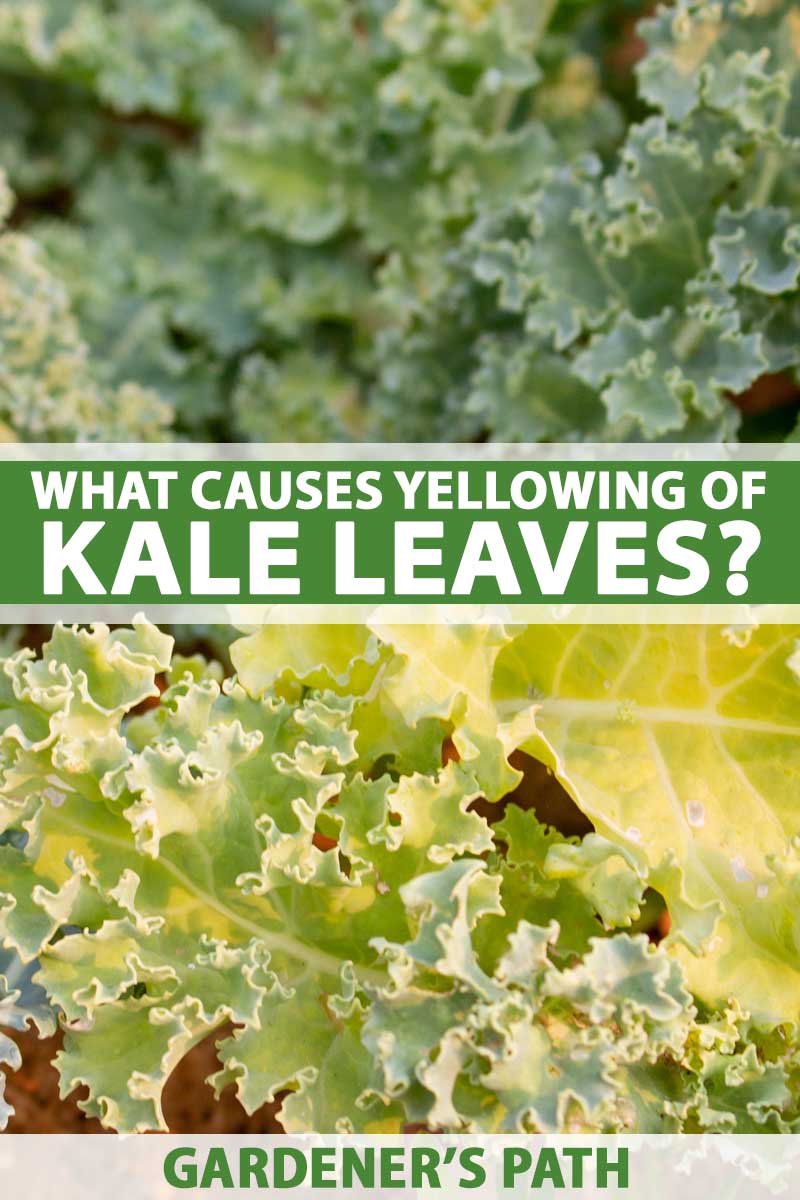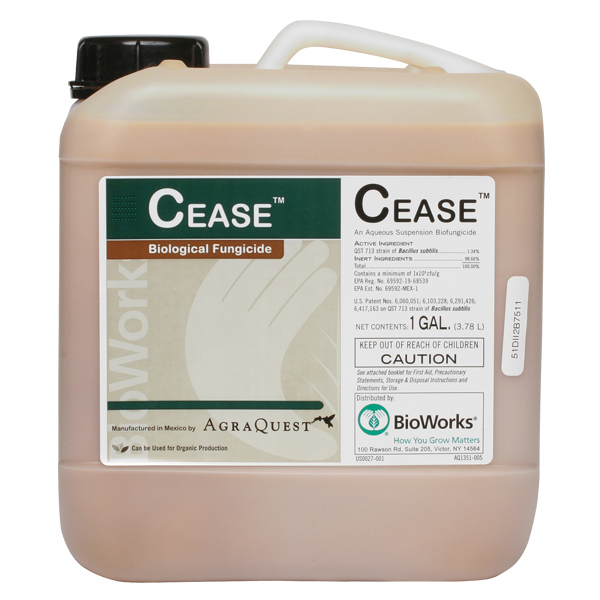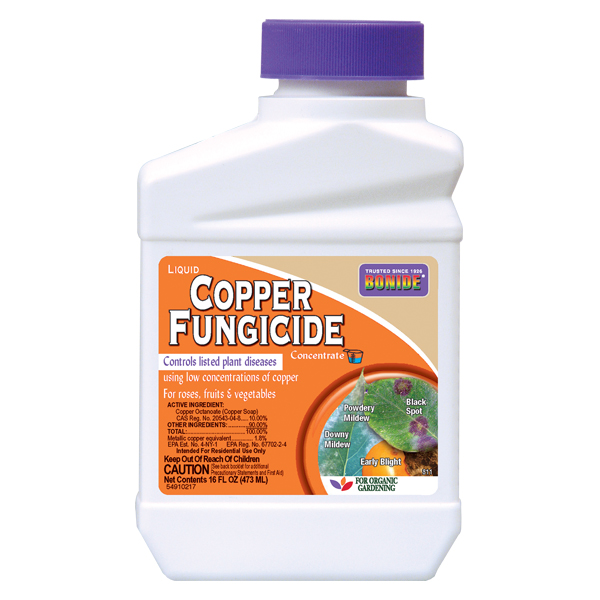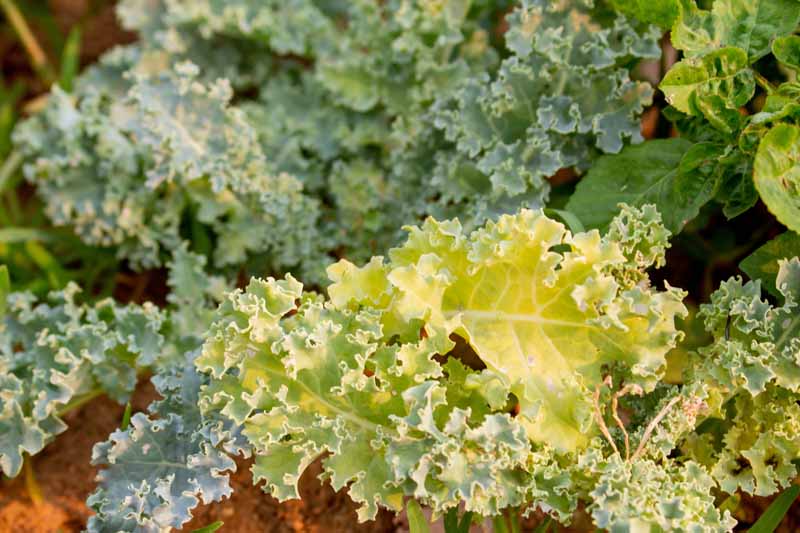Your best way to prevent this is to keep your plants healthy and grow them under the appropriate conditions, i.e., full sun and cool temperatures. Covering your seedlings with floating row covers will keep out pests and keep water containing pathogens from splashing onto your kale plants. However, there are times when your kale plants can come down with a disease. Several types of pathogens can cause the leaves of your kale plants to turn yellow and thin out. We link to vendors to help you find relevant products. If you buy from one of our links, we may earn a commission. These bacterial diseases can be serious. They spread quickly and damage the leaves. Once your kale plants are infected, it may not be possible to stop the disease if conditions are favorable. Therefore, your best bet for control is to prevent infection. Immediately remove any infected plant to try and prevent the bacteria from spreading to the rest of your crop. In this guide we will describe these diseases and provide tips on how to prevent and manage these infections.
What Pathogens Cause Leaf Yellowing on Kale?
Several species of bacteria cause the leaves of kale to turn yellow, including two major bacterial pathogens. The two organisms are Pseudomonas syringae pv. maculicola (Psm) and Xanthomonas campestris pv. amoraciae (Xca). The weather will affect which of these bacteria are plaguing your plants. For example, Psm prefers daytime highs of 65 F to 75 F, so it is more likely to be a problem in the Pacific Northwest or during the fall of warmer climates. In contrast, Xca is more prevalent at warmer temperatures, so it is more likely to be a problem in the southern states. Black rot (Xanthomonas campestris pv. campestris or Xcc) is a severe disease of kale and other crucifers, such as turnips and cabbage, although this pathogen infects kale less easily than its other cruciferous hosts. This disease gets its name because it turns the plants black in its advanced stages. However, in its early stages, some isolates of Xcc can cause the kale leaves to turn yellow.
Initial Symptoms
Both Psm and Xca infections start out with small water-soaked lesions with halos that grow larger and merge, resulting in widespread yellowing. Severe infections can cause the leaves to die. Death in the leaf veins is one symptom that distinguishes these bacterial leaf diseases from those caused by fungi. Xcc usually moves into the plant’s vascular system and turns the whole plant black. However, some isolates can cause leaf blights and yellowing on kale in their early stages of infection. The leaves will drop off the plant as they die. Black rot can be diagnosed because of the V-shaped lesions that typically occur on the edge of the leaves against the veins.
Cultural Controls to Prevent Infection
Plant Pathogen-Free Seed
Since black rot is such a severe disease, many seed companies test for its presence. The test will cross-react with the closely related Xca bacterial leaf spot, so you can buy seed that lacks both of these pathogens. However, there are no tests for Psm, so you should try to purchase high-quality seed from companies that raise their plants in dry locations where they are less likely to contract these bacterial diseases that prefer wet conditions. If you think that your seeds could possibly contain pathogens, you can treat them with high heat (122 F for 15 minutes). The advantage of using hot water over bleach is that the bacteria can survive inside the seed. Bleach will only kill organisms on the surface of the seed. We trust those companies that we recommend in our kale cultivar selection guide.
Irrigate Carefully
Since these pathogens are spread by splashing water, you should avoid irrigation with sprinklers. If you are growing your kale in a greenhouse, use ebb and flow irrigation. Irrigate during the day. If you irrigate in the morning, there may be dew, which can help to spread these bacteria. If you irrigate too late in the day, your kale plants might stay wet overnight – another factor that makes them susceptible to infection.
Quickly Dispose of the Plant Residue
Once you have harvested your crop, you should shred and bury any diseased crop residue. Fortunately, these pathogens do not survive in the soil, so once the crop residue degrades, they will no longer be a threat.
Rotate Your Crops
It is good practice to rotate your cole crops every few years as a general practice. However, if you know you have had one of these diseases, you would be well advised to grow other types of crops on this land for two years. You could even consider four years in the case of black rot.
Control Weeds
Even if you plant disease-free seeds, that may not be enough to protect your plants if cruciferous weeds, such as wild mustard, wild radish, and shepherd’s purse, are in the area. They can all serve as reservoirs of bacteria to infect your kale plants.
Handle Seedlings with Care
If you can, plant your seeds directly where you will grow your plants. These bacterial diseases can spread much more quickly among closely spaced seedlings.
If you do grow your seedlings separately, make sure that your seedbeds are away from your main planting locations. If your seedlings are too large, do not clip them. If you find symptoms, destroy all the seedlings around that area. Make sure that the foliage is dry when you transplant the seedlings.
Biofungicide
If your kale plants are in a greenhouse, you can use the organic biologically based bactericidal and fungicidal treatment Bacillus subtilis strain QST 713. It’s sold under the brand name CEASE. CEASE™ Biological Fungicide via Arbico Organics CEASE™ is available in much larger batches and is designed for commercial applications. Learn more about Bacillus subtilis here.
Liquid Copper
If your kale leaves are showing signs of bacterial disease, you can also spray them with liquid copper.
BONIDE® Liquid Copper Fungicide This treatment will not reduce the number of diseased leaves. However, it might reduce the severity of the disease.
Kale Can Contract Bacterial Diseases That Cause Yellowing
Despite its tendency to be healthy, kale plants can be susceptible to frightful bacterial pathogens under the right conditions. Once infected, their leaves will turn yellow, and the plants will be noticeably thinner.
Prevention is the key to avoiding these bacterial leaf diseases. Make sure your seed is disease-free. In addition, ruthlessly purge any wild crucifer plants in the vicinity of your kale plants, since they can serve as reservoirs of these bacteria. Weeds like wild mustard and wild radish are frequent sources of pathogens for kale and other types of crucifers. If the disease is not too far advanced, you can treat with the biopesticide Cease or liquid copper. Have your kale plants contracted one of these diseases? Share your experience in the comments. Learn more about kale with these guides:
Is Ornamental Kale Edible? 6 Best Types of Kale for Cold Climates How to Harvest and Store Kale Seeds How to Keep Kale From Wilting In the Garden
© Ask the Experts, LLC. ALL RIGHTS RESERVED. See our TOS for more details. Product photos via Arbico Organics, Bayer Global, AgraQuest, and Bonide. Uncredited photos: Shutterstock.
